Difference between revisions of "How to Format and Mount the HDD/SSD on Raspberry Pi"
| Line 32: | Line 32: | ||
You need to unmount the partition before resizing it. That’s why you can resize the system partition once the system is loaded. As Raspberry Pi OS will automatically mount all partitions, the first step is to right-click on it, and choose “Unmount”: | You need to unmount the partition before resizing it. That’s why you can resize the system partition once the system is loaded. As Raspberry Pi OS will automatically mount all partitions, the first step is to right-click on it, and choose “Unmount”: | ||
| + | [[File:Unmount-partition-1.jpg]] | ||
| + | |||
| + | Then, you have access to the Resize/Move option in the menu: | ||
| + | |||
| + | [[File:Resize-partition.jpg]] | ||
| + | |||
| + | You can either move the cursor on the graphical representation to resize the current partition or type the new size in the form. Then click on “Resize/Move” to save your changes. | ||
| + | |||
| + | The last step is to click on the green tick to apply the changes on your disk. | ||
| + | |||
| + | [[File:Save-changes-gparted.jpg]] | ||
| + | |||
| + | Raspberry Pi OS should now automatically mount the partition each time. | ||
| + | |||
| + | '''Create a new partition''' | ||
| + | |||
| + | Once the disk is selected, make sure you have some unallocated space available to create a new partition. If not, you need to resize an existing partition first (or just delete one if you don’t need it anymore). | ||
| + | |||
| + | Then, click on the unallocated space, and choose “New” in the dropdown menu. A form will show up. Make sure to check the values where I added a red arrow: | ||
| + | |||
| + | [[File:New-partition.jpg]] | ||
| + | |||
| + | At least, you need to set the new size (it will use all the space by default), the file system (fat32 for a small partition that you want to read on Windows, ext4 if you’ll only use it on the Raspberry Pi). | ||
| + | |||
| + | You can also choose a label, that will be used in the file explorer. | ||
| + | |||
| + | Once done, click “Add”. You’ll directly see the impact of your changes in the graphic representation. But you need to click on the green check to apply the changes on the disk. It may take a few minutes, depending on the partition size and hardware you use. | ||
| + | |||
| + | Once done, you’ll get a success message like this one: | ||
| + | |||
| + | [[File:New-partition-ok.jpg]] | ||
Revision as of 01:02, 8 December 2023
1. Install Gparted tool on Raspberry Pi
You can either use a terminal, and simply use the following commands:
sudo apt update sudo apt install gparted
Or via the graphical tool (“Add/Remove Software”), open the package manager and look for Gparted:
Check the box corresponding to gparted, and click “Apply” to start the installation, once installed, Gparted should be available in the main menu, under System Tools:
2. Use Gparted on Raspberry Pi
When you start Gparted, you need to type your password (administrator privileges are required). Then, you’ll get an interface looking like:
Start by picking the disk you want to modify in the top-right corner.
Reminder: It’s not possible to make changes on the disk you are currently using. You have to install Raspberry Pi OS on another device, and then plug the drive you want to edit.
Once done, you can change anything with a right-click on the partition name or in the graphical representation. I will show you how to resize a partition or create a new one.
Resize a partition
You need to unmount the partition before resizing it. That’s why you can resize the system partition once the system is loaded. As Raspberry Pi OS will automatically mount all partitions, the first step is to right-click on it, and choose “Unmount”:
Then, you have access to the Resize/Move option in the menu:
You can either move the cursor on the graphical representation to resize the current partition or type the new size in the form. Then click on “Resize/Move” to save your changes.
The last step is to click on the green tick to apply the changes on your disk.
Raspberry Pi OS should now automatically mount the partition each time.
Create a new partition
Once the disk is selected, make sure you have some unallocated space available to create a new partition. If not, you need to resize an existing partition first (or just delete one if you don’t need it anymore).
Then, click on the unallocated space, and choose “New” in the dropdown menu. A form will show up. Make sure to check the values where I added a red arrow:
At least, you need to set the new size (it will use all the space by default), the file system (fat32 for a small partition that you want to read on Windows, ext4 if you’ll only use it on the Raspberry Pi).
You can also choose a label, that will be used in the file explorer.
Once done, click “Add”. You’ll directly see the impact of your changes in the graphic representation. But you need to click on the green check to apply the changes on the disk. It may take a few minutes, depending on the partition size and hardware you use.
Once done, you’ll get a success message like this one:
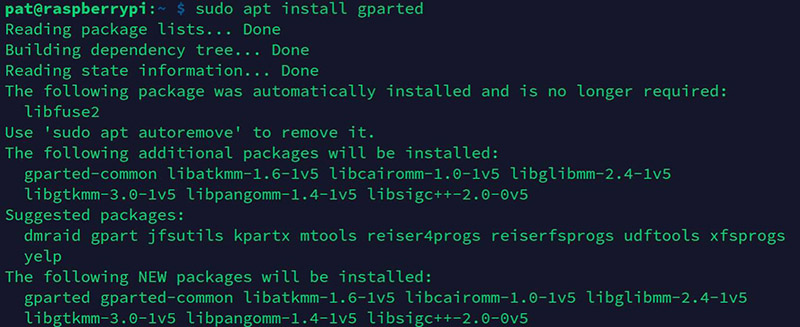

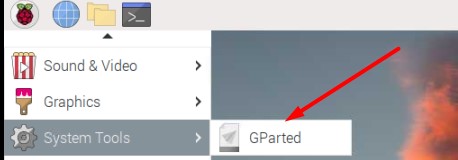
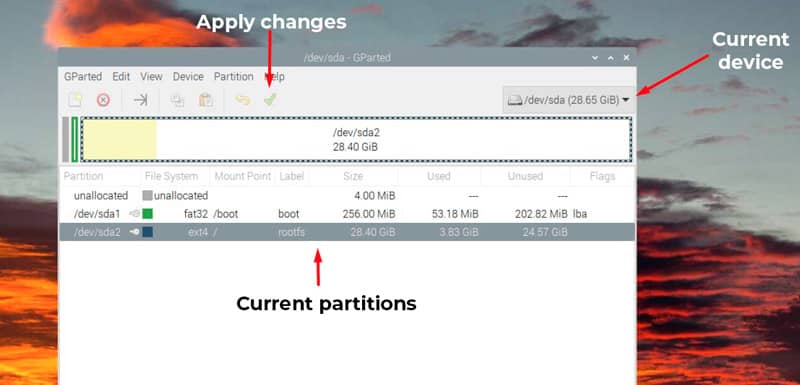
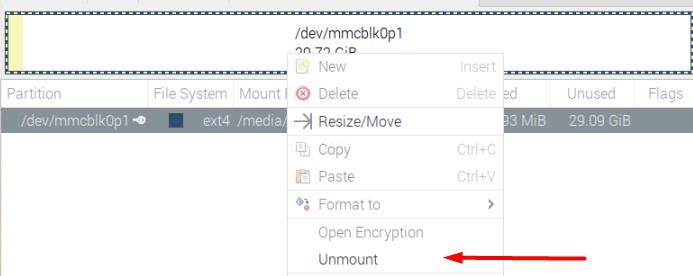
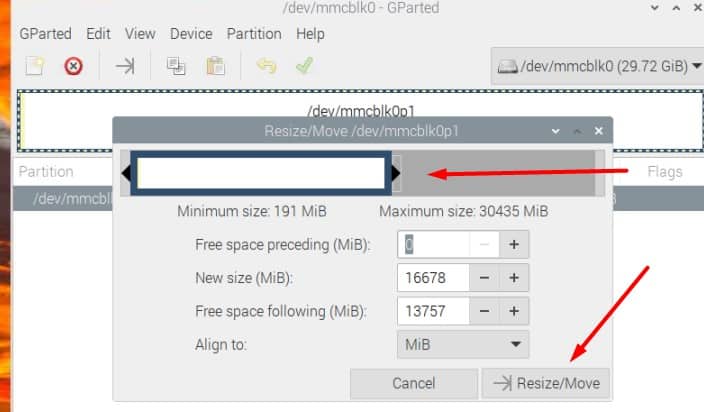
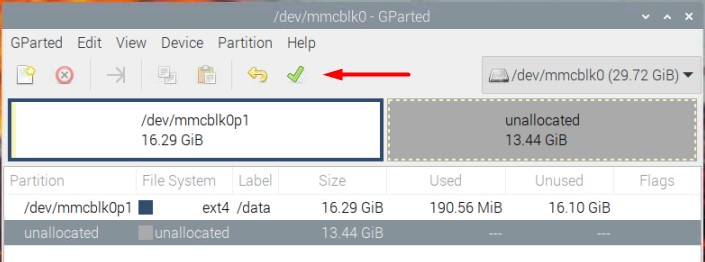
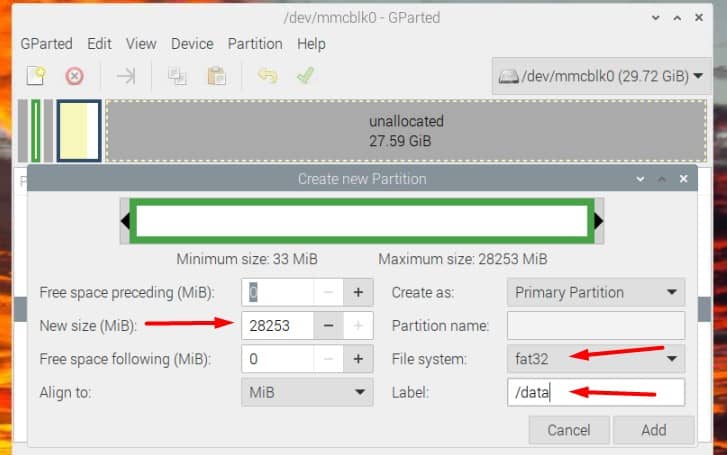

Enable comment auto-refresher
Anonymous user #1
Permalink |